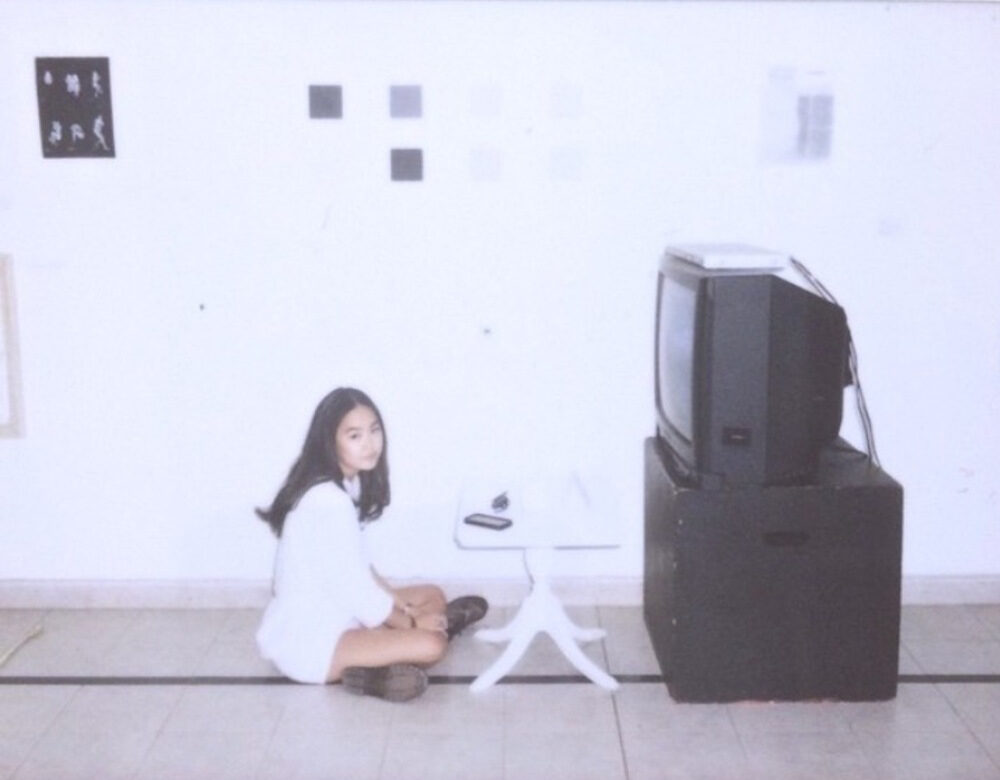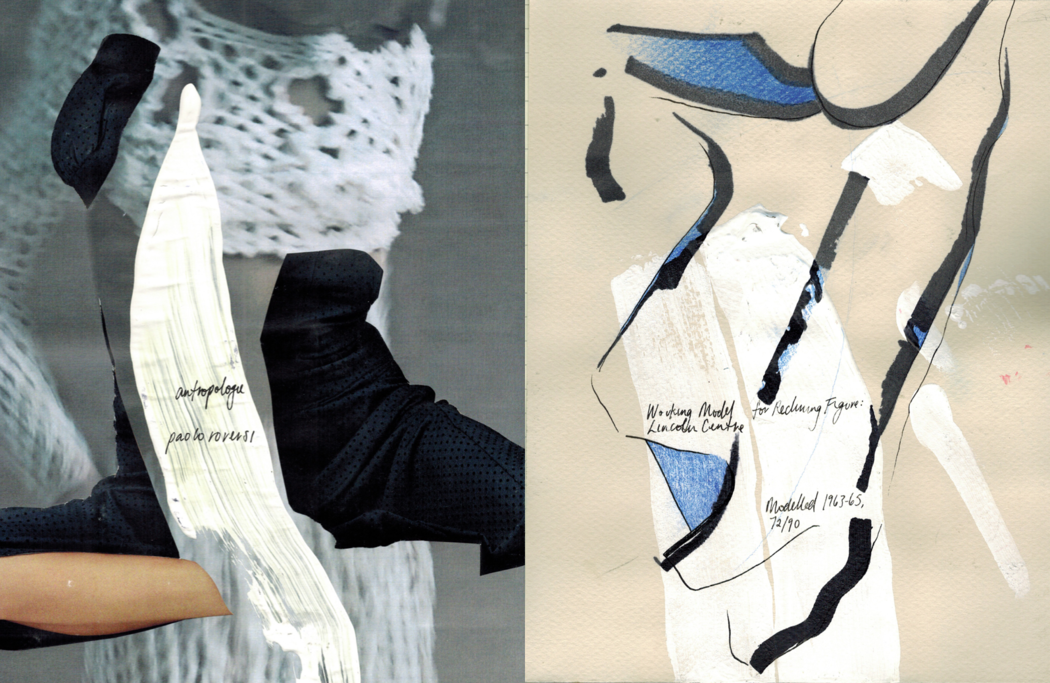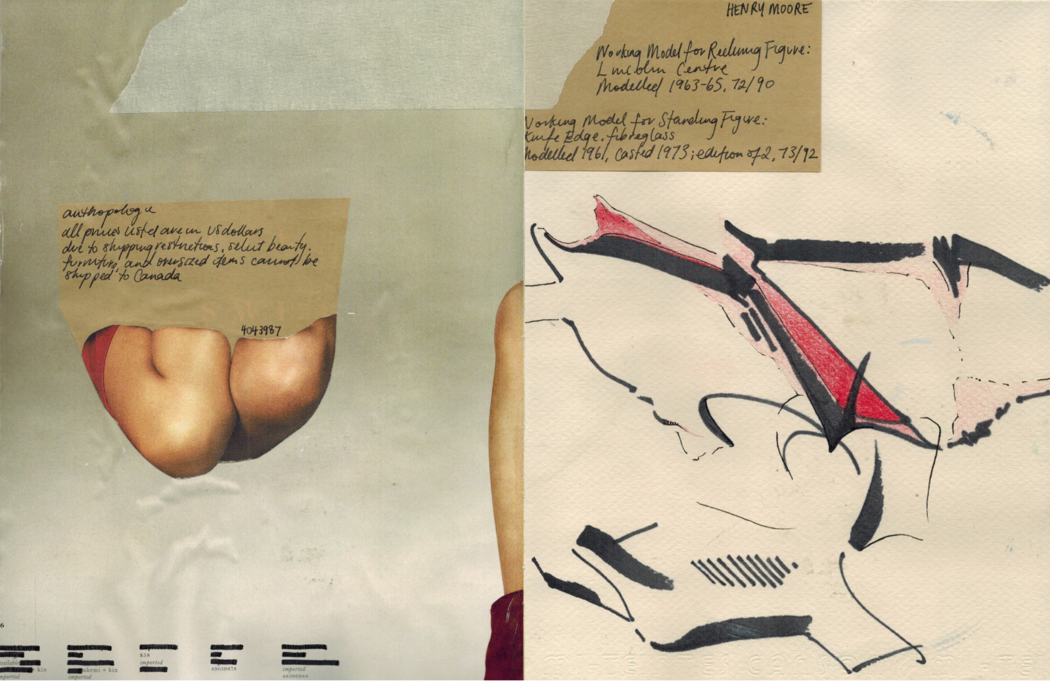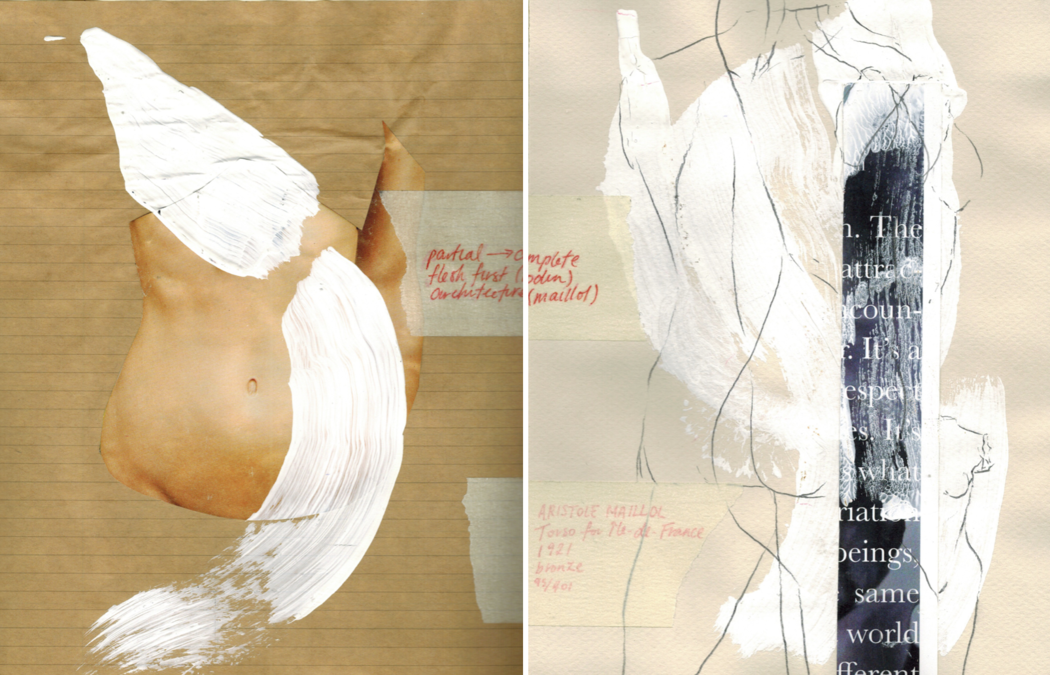Jackie Cheng
Your discipline: Visual Art, Design

Your works seem deeply personal and introspective. How do you begin a new collage or painting? Is there a specific memory or emotion that typically triggers the process?
My work is deeply personal and introspective because, in their most reductive form, they are essences of my thoughts on a page. My sketchbook becomes essentially my brain displayed visually, and finished works are completed explorations of a thought, an experience, or an idea. Most of my pieces begin with a specific person in mind. It’s not necessarily a single memory or emotion that triggers it, but rather a single being for whom, in a way, this piece is being created for. The identity of the subject and whether or not the subject sees the piece becomes irrelevant throughout the process. The final iteration of the work often presents itself as a documentation of an idealised, reimagined, and often unspoken rumination between my sense of self and fundamental themes of identity, desire, loss, and grief.
You use a wide range of materials—from posters and editorials to classical art references. What guides your selection of found imagery?
I am constantly sourcing and searching for imagery. I have binders of miscellaneous papers and cutouts, organised by colour, that I use regularly in my practice. Much comes from everyday life—receipts, ticket stubs, maps, postcards, etc. Others are more methodical, like magazines and publications, where hours are spent flipping through countless issues, examining each spread, and deciding which to save and what to discard. This process has become an intuitive one for me, after flipping through thousands of pages regularly, colours, textures, and forms that are compelling become recognised instantaneously. This practice also allows me to continually grow and develop my eye, as the depth and breadth of my visual rolodex and references are constantly being defined, refined, and ultimately, augmented.
 Jackie Cheng | Figure study | 2024
Jackie Cheng | Figure study | 2024
Many of your works include handwritten notes or fragments of text. How do words and language function in your visual storytelling?
Words and language function as just another visual tool I use in my practice to reflect the diaristic and introspective aspects of my work. Drawing on the connotations of handwritten notes, messages, and letters—the intimacy, notions of sincerity, suggestions of secrecy—they act as another mark-making technique. Often used in lieu of a paint stroke, I think of it akin to photo transfers. Many times, the intention behind the text is not even for the viewer to read. Although all texts relate to the subjects of the pieces, their addition is always first and foremost, intended to add depth and texture.
Your layering technique creates a tactile and emotional depth. Can you talk about the relationship between concealment and revelation in your work?
Much like any introspective process, whether it be through writing, speaking, or reflecting, there are always moments of revelation, discovery, and confession that occur. The relationship between concealing and revealing in my work explores that. Simultaneous to the painting process is this constant editing, revising, and layering of collage elements, photo transfers, and text. Through this approach, both the formal and conceptual become defined and refined. Even the dichotomy between the finished and unfinished becomes part of my visual language. As a result, my practice and stylised sensibility becomes one that embraces the ongoing, ever-changing, and open-ended while allowing hidden and unspoken thoughts to reside.
 Jackie Cheng | Figure study | 2024
Jackie Cheng | Figure study | 2024
How do you navigate the boundary between design and fine art in your practice?
There really aren’t any boundaries between design and fine art in my practice. My process weaves in both artist and designer spaces, with inspirations, influences, methods, and resolutions coexisting in both.
Several of your pieces reference iconic sculptures and artists (e.g., Henry Moore, Maillol). What role does art history play in your exploration of self?
Those pieces are exploratory collages created after experiencing a Moore and Maillol exhibit. Part documentative and part diaristic, the analysis and connection to the history of art and other artists play an integral role in my exploration of self. Through this dialogue, artists of the past become present in the contemporary, allowing my process to exist amongst their practice, ideologies, and techniques. As a result, this allows me to ground my work while providing frameworks of form, perspective, and composition to push and explore.
 Jackie Cheng | Figure study | 2024
Jackie Cheng | Figure study | 2024
Can you speak about the role of the body—especially the fragmented or abstracted body—in your visual language?
Both the female and the male figure, simultaneous to the female and male gazes, are a constant source of stimuli and dynamism in my work. Themes of intimacy and sexuality that are often associated with nude forms are also important in my visual language. Through their abstraction and fragmentation, I am able to examine them both formally and conceptually. My depictions of nude figures reflect not the literal, but rather, surreal imaginings that transform images of the past into a reflection of my emotional interior. Through this documentation of both emotional history and the history of bodies, the work redefines itself to not only be the sum of lived experiences, but a collective of connections, losses, and secrets. As a result, it aims to prompt the viewer to redirect their experience internally and recall their own past connections, lost connections, and current connections.

Leave a Reply